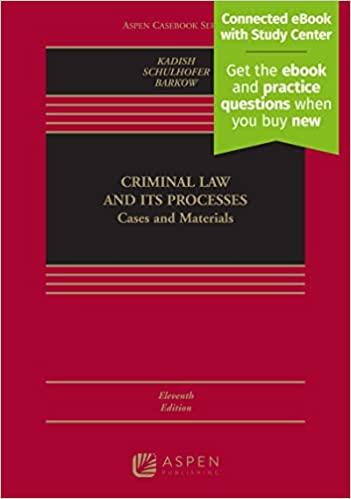Question
Discuss at least two or three points or ideas from the below statement and explain why you agree or disagree with her. Be sure to
Discuss at least two or three points or ideas from the below statement and explain why you agree or disagree with her. Be sure to support your ideas.
I want to talk to you about restorative justice a surprising approach that might offer better outcomes for victims' offenders and the communities they live in, and I want to suggest they had an order for it to work we all must do our part. It's a philosophy that says getting justice means repairing harm in restorative justice repairing harm happens through face-to-face dialogues between the people harmed and the people responsible. For example, someone who vandalized a local business might agree to repaint the wall themselves, someone who caused a car accident might agree to pay the victims medical bills, and sometimes agreements are symbolic like writing a letter of apology, but the goal of these agreements and the whole process is always to meet the needs that were created by the crime and to facilitate direct accountability. I am NOT saying that restorative justice is the answer to every criminal case or all the complex problems with the criminal justice system and I want to be clear that victims should always have a choice about if and when they meet someone that harmed them but what I am saying is that this is a transformative approach that can be used far more often than we may believe. In studies of Colorado's diversion programs show that 95% of both victims and offenders are satisfied with
the process and that offenders have a recidivism rate of just 8%. So, if restorative justice works so well why isn't it the basis for our current justice system? I was, surprised to find that most states have adopted legislation that supports the use of restorative justice in criminal cases but that these policies are rarely put into practice by prosecutors, judges, and correctional officials. What I learned is that they were either skeptical about restorative justice or they just didn't
understand how it fit in their roles. Restorative justice face-to-face dialogue about crime conflict pain suffering it's incredibly difficult. Our inability to face those we hurt and those who hurt us we participate knowingly or unknowingly in systems of control and isolation. Our policy problem is a people problem. Good news is restorative justice offers a people solution it teaches us that what changes our choices is actually not laws it's actually coming face to face realizing that we've hurt someone and being willing to make amends and similarly if we want to change the criminal justice system, we have to face each other take responsibility for our roles in mass incarceration and do what we can to repair the harm.
Step by Step Solution
There are 3 Steps involved in it
Step: 1

Get Instant Access to Expert-Tailored Solutions
See step-by-step solutions with expert insights and AI powered tools for academic success
Step: 2

Step: 3

Ace Your Homework with AI
Get the answers you need in no time with our AI-driven, step-by-step assistance
Get Started


